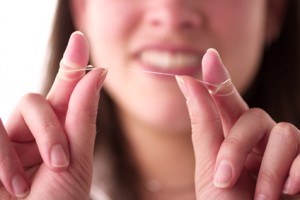How Your Dentist Knows You Aren’t Flossing
 Picture this: You’re mere moments away from your regular dental visit, anticipating the question, “Have you been brushing and flossing regularly?” In an attempt to clean whatever might be lurking between your teeth before your hygienist or dentist catches you red-handed, you franticly brush and floss hours before your appointment. Once that dreaded questions comes, you give your answer, “Yes of course I do! All the time! I love flossing!,” but get the distinct feeling that they just don’t believe you.
Picture this: You’re mere moments away from your regular dental visit, anticipating the question, “Have you been brushing and flossing regularly?” In an attempt to clean whatever might be lurking between your teeth before your hygienist or dentist catches you red-handed, you franticly brush and floss hours before your appointment. Once that dreaded questions comes, you give your answer, “Yes of course I do! All the time! I love flossing!,” but get the distinct feeling that they just don’t believe you.
So, how do we dentists know if you’ve been flossing regularly?
Being dentists, we can’t stress enough the importance of regular flossing in conjunction with brushing. Flossing is important to your gum and tooth health and when you don’t floss regularly, there are very apparent consequences.
The most obvious is inflammation between the teeth. When you don’t floss regularly, plaque, bacteria, and debris sit between the teeth causing inflammation. As a result, your gums start to look pink, puffy and inflammed and bleed easily.
The second give away is cavities forming between the teeth. Brushing your teeth, no matter how good and efficient you are at it, will not clean where the teeth meet. The only way to clean in that crucial spot is to floss. If you have any cavities or the beginning stages of cavities, it indicates that flossing is a weak point in your home care regimen.
Lastly, the biggest and most obvious sign that a patient is not flossing regularly is cuts or abrasions on the gums, indicating that the patient may have just flossed or isn’t doing it correctly or efficiently. If you aren’t careful and don’t know you’re way around your teeth and mouth, it will show.
The moral of the story is simple, make flossing a part of your daily regimen! The benefits to your oral health are tremendous.
